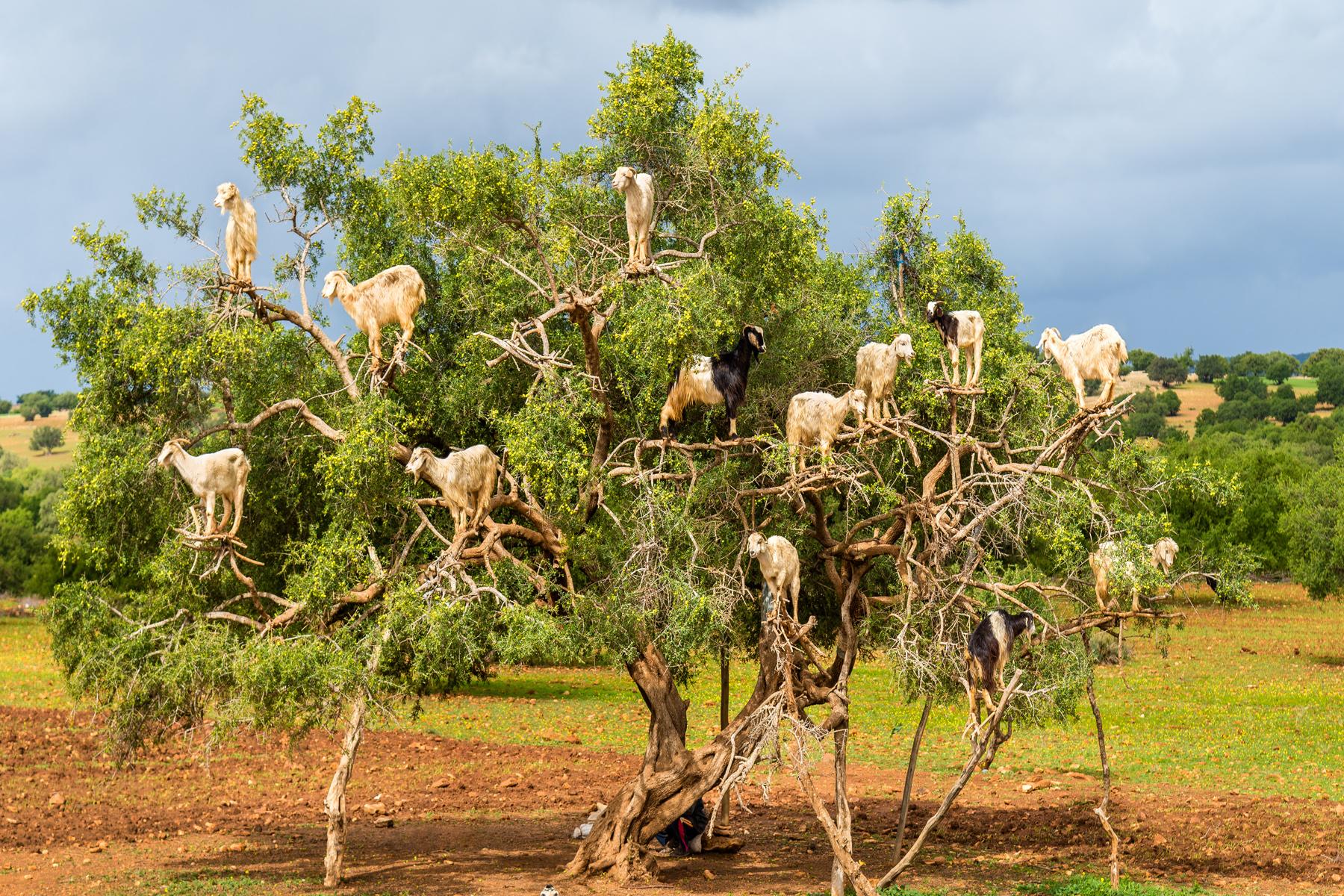Don’t fall for this scaaaaaaaaaaam.
Here’s the thing: Goats can climb trees. This behavior, wherein the animals perch on branches to search for food, is not particularly uncommon. In fact, it’s so notable that tourists have been known to gather along the roads outside Marrakesh to observe the animals’ behavior–which, naturally, makes for amusing social media fodder. Turns out, it could be a lie.
In a recent investigation, environmental photojournalist Aaron Gekoski found that some farmers in the area are actually importing the goats from surrounding regions and forcing them to climb the area’s Argania trees, which contain many branches that the animals navigate with ease. The tree–which grows in a country whose resources for wild animals is known to be scarce–produces flowers that contain a fruit. This fruit’s seed is encased in a nut, which is surrounded by a pulp that attracts the animals. When the goats tire from their climb(s), the farmers bring them down and swap them out with new goats.
If such a photo opportunity seems too good to be true, it often is.
“After seeing tourists’ interest in the tree-dwelling goats, some opportunistic farmers decide to manipulate the situation for financial gain,” Gekoski told The Telegraph. “They will take the goats home in the late afternoon, before coaxing them back into the trees at sunrise.” Tourists reportedly remain blissfully unaware, preoccupied with getting the perfect shot or selfie.
Recommended Fodor’s Video
Gekoski discovered the farmers’ treatment of the goats during research for a campaign that aims to put an end to cruel animal tourist attractions across the globe. This isn’t his first time uncovering and dealing with such happenings. In March 2018, he was announced as a finalist at Environmental Photographer of the Year and, just a few months prior to that, he released a story on the traveling dolphin cruises in Indonesia. Also, as a TV presenter, Gekoski has fronted series across multiple networks that highlight wildlife and conservation; his research in Morocco was part of this effort.
What to Do if You Witness This Behavior
First of all, if someone approaches you and requests that you need to pay to see the goats, do not cough up any dough. Gekoski noted that he heard the farmers have even constructed platforms in the trees and, when the goats are swapped throughout the day, coax the goats to climb. If you see any of this behavior, speak up. Reach out to such organizations as the Morocco Animal Aid (MAA) and/or SPANA, which has provided more than 60,000 treatments to working animals across Morocco and offers mobile veterinary care to animals in remote locations.
Also, the Born Free Foundation, an international wildlife charity, is working to bring awareness to this sort of exploitation with a new program called Raise the Red Flag that will “provide people with the tools to make their voice heard for animals,” according to Dr. Chris Draper, Born Free’s head of animal welfare and captivity. If such a photo opportunity seems too good to be true, Draper told The Telegraph, it often is.
There are goats that naturally climb the trees in Morocco, and getting a picture of them is adorable. Just make sure you aren’t paying for farmers to exploit the animals, and that the animals are just climbing trees in their own right.



